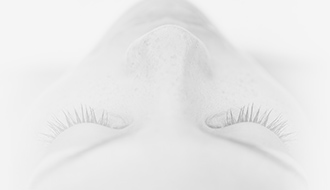Why Do I Have Gynecomastia?

When men develop feminine-looking male breasts, this is a condition known as gynecomastia. This issue can cause body issues and embarrassment in a number of situations.
It can also create physical issues. The swelling can cause a feeling of heaviness on the chest and the area can be tender to the touch, creating discomfort. It can cause pain at times, and in some cases, it may even lead to discharge from the nipples.
What Are the Potential Causes of Gynecomastia?
Male glandular breast tissue can become enlarged due to several reasons. Understanding the potential cause of your gynecomastia will help you decide on the best way to resolve it effectively.
The most common reason for gynecomastia is a hormonal imbalance. Testosterone and estrogen are the male and female sex hormones, respectively. While both are present in the body, in men there is usually more testosterone. This helps in creating male characteristics.
A reduction in testosterone levels and a corresponding increase in estrogen levels can lead to a development of female characteristics like the growth of glandular breast tissue.
A natural hormonal imbalance occurs during hormonal changes at the puberty stage or above age 50. Apart from this natural hormonal change, gynecomastia can be caused by any of the following factors:
• Health conditions like liver cirrhosis, malnutrition, hyperthyroidism, and testicular diseases can lead to hormonal changes that in turn cause gynecomastia.
• There are certain medications that can cause hormonal imbalance leading to gynecomastia. These include some types of antibiotics (metronidazole, ketoconazole), anti-ulcer medicines (ranitidine, omeprazole), anti-retroviral therapy given to treat HIV, diazepam, and substances that are abused (alcohol, heroin, and marijuana).
• Some products used for skin care, like lavender oil and tea tree oil, can lead to the development of gynecomastia.
• Sometimes, anti-androgen therapy is given to treat prostate cancer. This can cause a hormonal imbalance.
• Use of steroids can lead to gynecomastia.
What Can Be Done to Correct Gynecomastia?
In most cases, the hormonal imbalance causing the condition is only temporary and will resolve on its own after a while. Estrogen will reduce and testosterone will increase, restoring the balance and reducing excess breast tissues.
Medications can be taken that block the functioning of estrogen. In severe cases where there is pain and other options don’t help, male breast-reduction surgery may be carried out to remove the excess tissue.
There are two types of tissue in the breasts that can be responsible for swelling in the male chest. One is glandular tissue, and when this makes up the majority of the excess tissue, the condition is true gynecomastia. The other is fatty tissue, and when this makes up the majority of the excess tissue, the condition is pseudogynecomastia.
Male breast reduction involves tissue removal. For true gynecomastia, excision is performed using a scalpel. For pseudogynecomastia, liposuction is used to remove the fatty tissue. In some cases, excision and liposuction are both necessary to recontour the chest. Excess skin is often also removed, and the areolae may be resized.
Set Up Your Consultation
If you’re looking to get a more attractive male chest, cosmetic surgeon Dr. Jane Chung can help. Contact our office to schedule your initial consultation today! She has helped countless patients get rid of their man boobs and get a more appealing chest.


